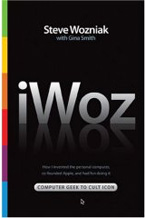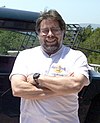
The Apple Computer 1 (Apple-1), later known predominantly as the Apple I, is an 8-bit motherboard-only personal computer designed by Steve Wozniak and released by the Apple Computer Company in 1976. The company was initially formed to sell the Apple I – its first product – and would later become the world's largest technology company. The idea of starting a company and selling the computer came from Wozniak's friend and Apple co-founder Steve Jobs. One of the main innovations of the Apple I was that it included video display terminal circuitry on its circuit board, allowing it to connect to a low-cost composite video monitor or television, instead of an expensive computer terminal, compared to most existing computers at the time. It and the Sol-20 were some of the first home computers to have this capability.

The Apple II is a personal computer released by Apple Inc. in June 1977. It was one of the first successful mass-produced microcomputer products and is widely regarded as one of the most important personal computers of all time due to its role in popularizing home computing and influencing later software development.

Stephen Gary Wozniak, also known by his nickname Woz, is an American technology entrepreneur, electrical engineer, computer programmer, philanthropist, and inventor. In 1976, he co-founded Apple Computer with his early business partner Steve Jobs. Through his work at Apple in the 1970s and 1980s, he is widely recognized as one of the most prominent pioneers of the personal computer revolution.

The Homebrew Computer Club was an early computer hobbyist group in Menlo Park, California, which met from March 1975 to December 1986. The club had an influential role in the development of the microcomputer revolution and the rise of that aspect of the Silicon Valley information technology industrial complex.
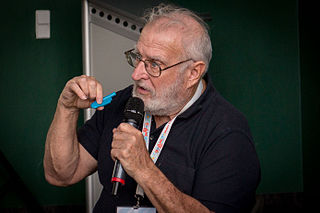
John Thomas Draper, also known as Captain Crunch, Crunch, or Crunchman, is an American computer programmer and former phone phreak. He is a widely known figure within the computer programming world and the hacker and security community, and generally lives a nomadic lifestyle.
Integer BASIC is a BASIC interpreter written by Steve Wozniak for the Apple I and Apple II computers. Originally available on cassette for the Apple I in 1976, then included in ROM on the Apple II from its release in 1977, it was the first version of BASIC used by many early home computer owners.

Pirates of Silicon Valley is a 1999 American biographical drama television film directed by Martyn Burke and starring Noah Wyle as Steve Jobs and Anthony Michael Hall as Bill Gates. Spanning the years 1971–1997 and based on Paul Freiberger and Michael Swaine's 1984 book Fire in the Valley: The Making of the Personal Computer, it explores the impact that the rivalry between Jobs and Gates (Microsoft) had on the development of the personal computer. The film premiered on TNT on June 20, 1999.

Breakout is an arcade video game developed and published by Atari, Inc. and released on May 13, 1976. It was designed by Steve Wozniak, based on conceptualization from Nolan Bushnell and Steve Bristow, who were influenced by the seminal 1972 Atari arcade game Pong. In Breakout, a layer of bricks lines the top third of the screen and the goal is to destroy them all by repeatedly bouncing a ball off a paddle into them. The arcade game was released in Japan by Namco. Breakout was a worldwide commercial success, among the top five highest-grossing arcade video games of 1976 in both the United States and Japan and then among the top three highest-grossing arcade video games of 1977 in the US and Japan. The 1978 Atari VCS port uses color graphics instead of a monochrome screen with colored overlay.
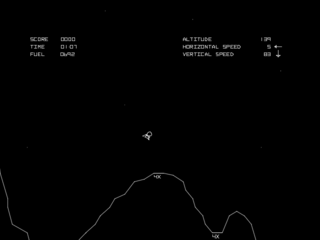
Lunar Lander is a genre of video games loosely based on the 1969 landing of the Apollo Lunar Module on the Moon. In Lunar Lander games, players control a spacecraft as it falls toward the surface of the Moon or other astronomical body, using thrusters to slow the ship's descent and control its horizontal motion to reach a safe landing area. Crashing into obstacles, hitting the surface at too high a velocity, or running out of fuel all result in failure. In some games in the genre, the ship's orientation must be adjusted as well as its horizontal and vertical velocities.
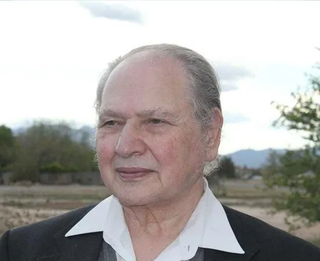
Ronald Gerald Wayne is an American retired electronics industry business executive. He co-founded Apple Computer Company as a partnership with Steve Wozniak and Steve Jobs on April 1, 1976, providing administrative oversight and documentation for the new venture. Twelve days later, he sold his 10% share of the new company back to Jobs and Wozniak for US$800, and one year later accepted a final $1,500 to forfeit any potential future claims against the newly incorporated Apple.
Armas Clifford "Mike" Markkula Jr. is an American electrical engineer, businessman and investor. He was the original angel investor, first chairman, and second CEO for Apple Computer, Inc., providing critical early funding and managerial support. At the company's incorporation, Markkula owned 26% of Apple, equivalent to each of the shares owned by cofounders Steve Jobs and Steve Wozniak.
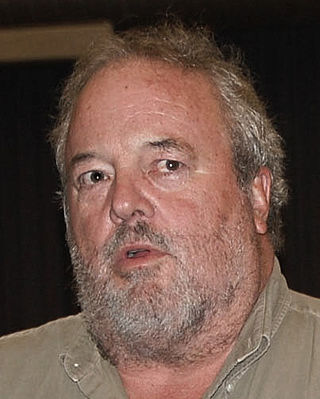
Allan Alcorn is an American pioneering engineer and computer scientist best known for creating Pong, one of the first video games. In 2009, he was chosen by IGN as one of the top 100 game creators of all time.

Apple Inc., originally Apple Computer, Inc., is a multinational corporation that creates and markets consumer electronics and attendant computer software, and is a digital distributor of media content. Apple's core product lines are the iPhone smartphone, iPad tablet computer, and the Mac personal computer. The company offers its products online and has a chain of retail stores known as Apple Stores. Founders Steve Jobs, Steve Wozniak, and Ronald Wayne created Apple Computer Co. on April 1, 1976, to market Wozniak's Apple I desktop computer, and Jobs and Wozniak incorporated the company on January 3, 1977, in Cupertino, California.
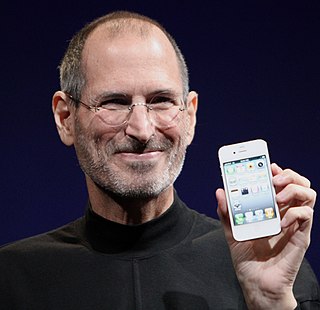
Steven Paul Jobs was an American businessman, inventor, and investor best known for co-founding the technology company Apple Inc. Jobs was also the founder of NeXT and chairman and majority shareholder of Pixar. He was a pioneer of the personal computer revolution of the 1970s and 1980s, along with his early business partner and fellow Apple co-founder Steve Wozniak.
CL 9 was a company that developed a universal TV remote control. It was started by Steve Wozniak, co-founder of Apple Inc. and designer of the Apple I and Apple II personal computers. CL 9 was in business for three years, from 1985 to 1988, launching the 6502-based CL 9 CORE remote control in 1987, which Wozniak calls the first programmable universal remote control.
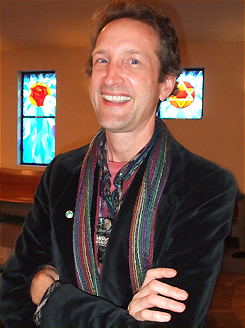
Daniel Kottke is an American businessman known for having been a college friend of Steve Jobs and one of the first employees of Apple Inc. He met Jobs at Reed College in 1972, and they trekked together through India for spiritual enlightenment and to the All One Farm. In 1976, Kottke realized his interest in computers when Jobs hired him to assemble hobbyist computer projects and then to be a part-time employee at the newly founded Apple Computer. There, he debugged the Apple II family, prototyped the Apple III and Macintosh, and endured the IPO where Steve Wozniak assigned Kottke some of his own stock. He was portrayed in several films about Apple.

Jobs is a 2013 American biographical drama film based on the life of Steve Jobs, from 1974 while a student at Reed College to the introduction of the iPod in 2001. It is directed by Joshua Michael Stern, written by Matt Whiteley, and produced by Stern and Mark Hulme. Steve Jobs is portrayed by Ashton Kutcher, with Josh Gad as Apple Computer's co-founder Steve Wozniak. Jobs was chosen to close the 2013 Sundance Film Festival.

Chuck Colby was an electronics engineer and chief-inventor, founder and president of Colby Systems Corporation, a company that created the first DVR-based video surveillance systems but is also very notable as a pioneer in portable computing, being the first to market both DOS and Macintosh portable computers, as well as a remarkable number of other technological firsts.

Atari Games Corp. v. Oman was a series of court cases where Atari, a video game developer, challenged the United States Copyright Office for refusing copyright registration for their arcade game Breakout. The Register of Copyrights first rejected Atari's registration in 1987, determining that Breakout lacked sufficient creativity to qualify as an audiovisual work. Atari twice appealed the register's decision before their copyright was granted. Decided in 1992, the case affirmed that video games are protected from clone developers who mimic a game's audiovisual aspects.

Frederick Rodney Holt is an American electrical engineer and political activist. He is Apple employee #5, and developed the power supply for the 1977 Apple II.
